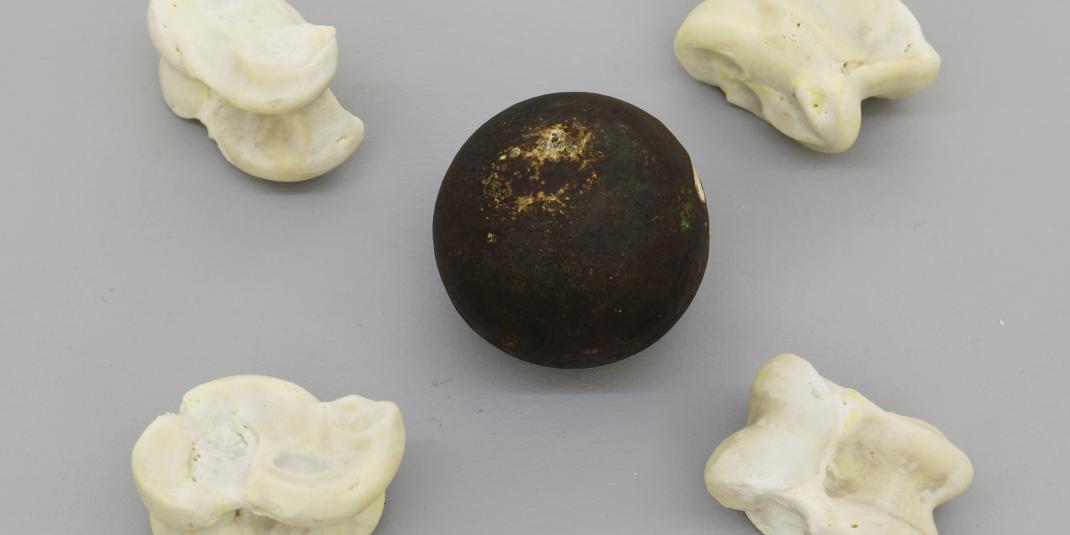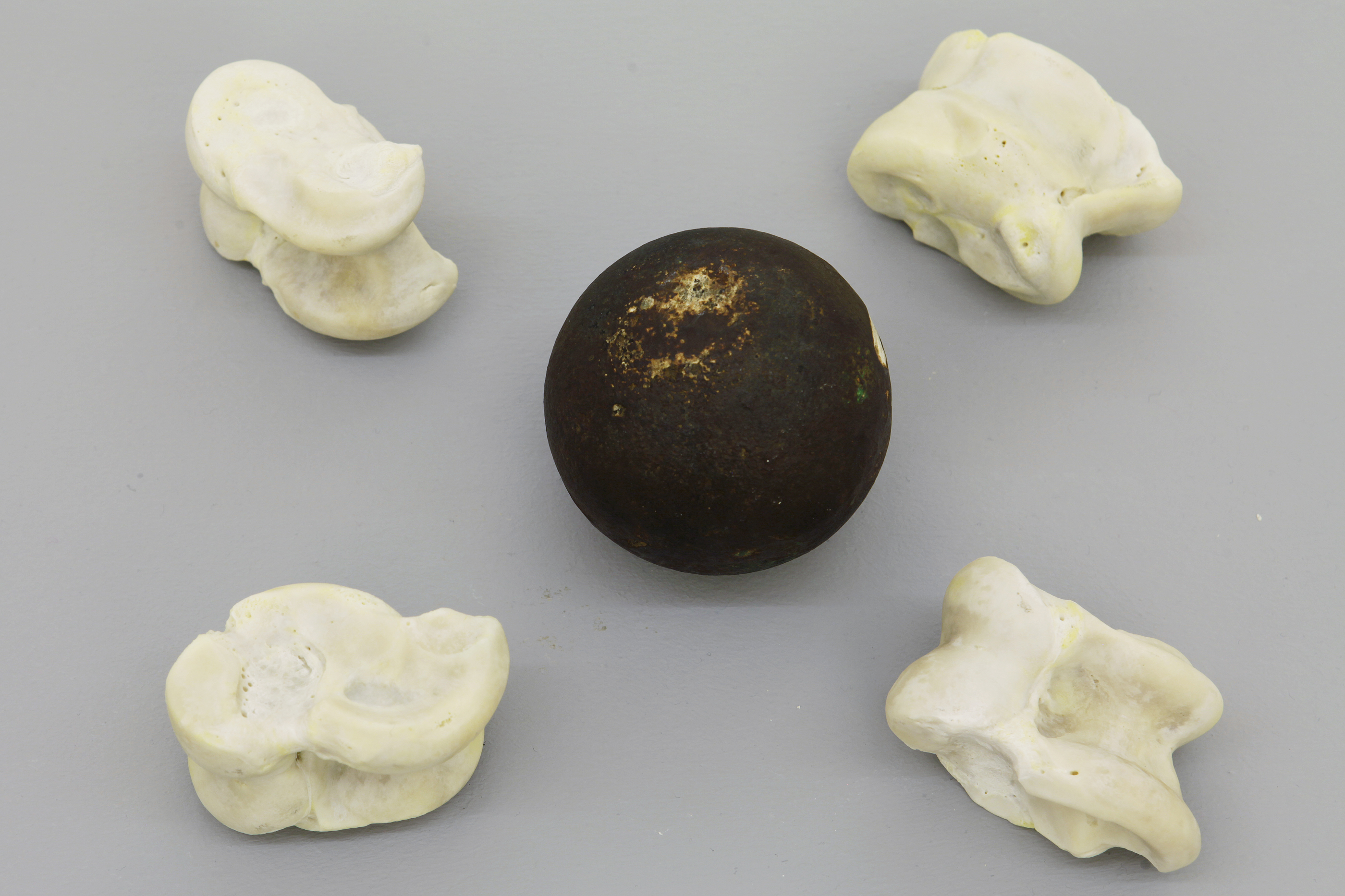
Rayyane Tabet (*1983)
Achilles' Heel, 2015
The sculpture Achilles’ Heel (2015) of the Lebanese artist Rayyane Tabet (*1983, Ashqout) is our recent acquisition in the field of contemporary art that was presented in the special exhibition »WAITING. Between Power and Possibility« (Spring 2017).
This work refers to the ancient Greek myth of Achilles, who was vulnerable only at his heel. It likewise serves to illustrate the contrast between organic and inorganic matter. Four bones from the joints of a cow are displayed in combination with a steel ball, as a juxtaposition of the ephemerality of natural products and the longevity of metal. Moreover, the work refers to a game called »Astragaloi«. This game, which has already been attested in ancient Greek-Roman archaeological finds and was played using the bones of a sheep, in antiquity had served as a finger exercise for children. As a child, the artist himself used to play this game, as Astragaloi represents a widespread method for training one’s motor skills in the Middle East until today. In Tabet’s work the playing pieces are enlarged and heavier. The bones are large and unwieldly, the steel ball is much too heavy for an exercise in skill.
Tabet’s complex sculpture appears to us as a find from a mysterious culture, which, the more it refuses its interpretation, intrigues us all the more.








